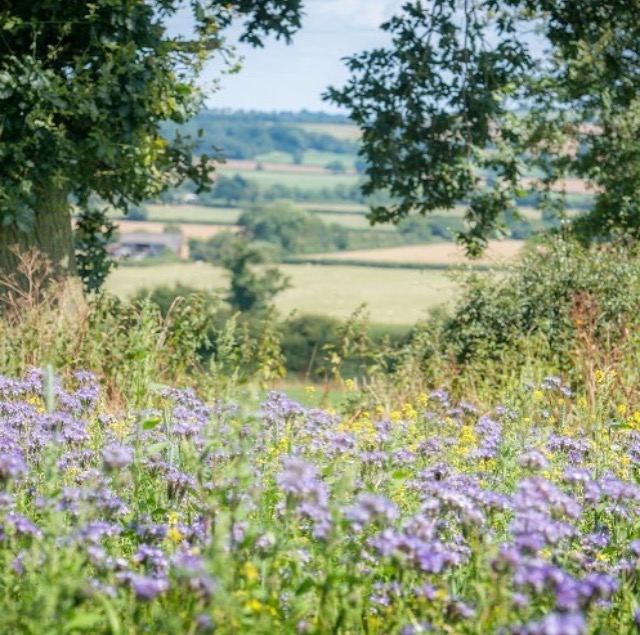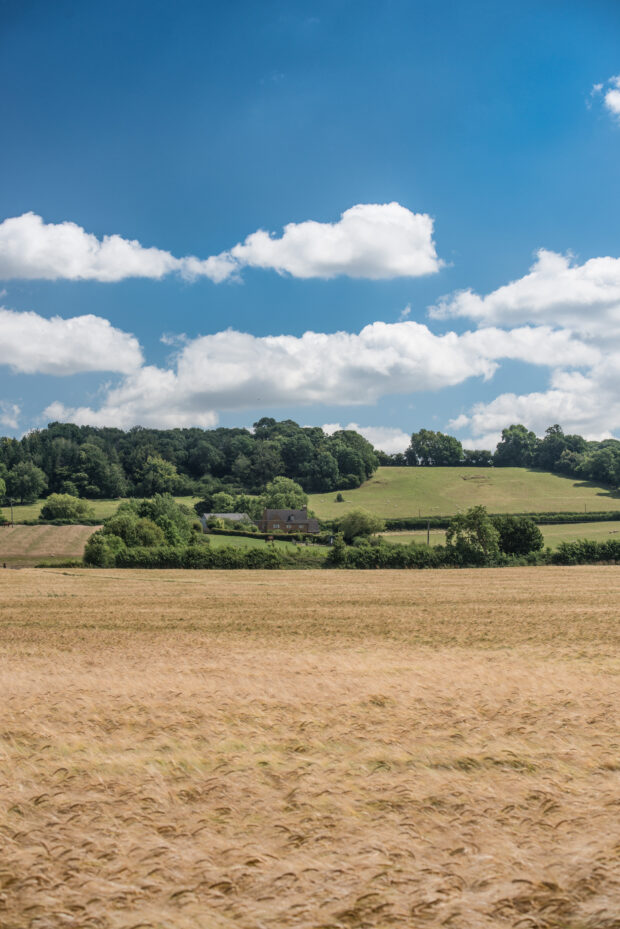Hugh Darbishire received a Bees’ Needs Award from Lord Gardiner in November last year for work he is doing to support wild pollinators and farm wildlife on his 450 acre mixed farm. He is passionate about the wildlife that thrives on the farm and explains how mixed farming plays an important role in providing healthy nutritious food whilst looking after nature, particularly bees, butterflies and other important pollinating species.

The Warwickshire farm has been in my family since 1938. The main enterprises on the farm are the breeding flock of sheep – sold to Sainsbury’s, and arable crops – mainly winter wheat and oilseed rape. Grass leys are grown for horse haylage production.
However, a large proportion of the farm is devoted to conservation measures. The ethos of the farm is to farm profitably as well as environmentally. We believe that it is important to run all our enterprises so that they link together, thus making the farm more sustainable. More than 14% of our land is now devoted to a range of environmental schemes and I am particularly proud of all the pollen and nectar crops that are scattered around the farm.
The farm has been in a whole farm conservation scheme under Countryside Stewardship for more than 16 years. Mixed farming under this scheme has led to a tremendous diversity because rotating crops and winter grazing contribute to a rich environment.

This integration is vital for a healthy, sustainable farm system as it builds soil fertility and increases diversity, which is beneficial for both people and wildlife. The careful rotation of crops and livestock means the farm system functions in a much healthier, holistic way. For example I will graze the sheep for two years and then rotate this to grow wheat, which will do much better on this previously grazed land. It also helps to break the weed, pest and disease cycles and this reduces the need for pesticides, wormers and antibiotics.
I spend a lot of time experimenting with different rotations to ensure that they offer maximum benefit for a range of bees and farmland birds.

The arable area is almost 2/3 (about 100ha of cropped area and 80ha of permanent crops) of the farm with 10% of this included in an environmental scheme. The main crops are winter wheat, spring malting barley, and short term grass leys. A lot of work is carried out by a local contractor, which enables us to access high quality machinery including field mapping. This means that the whole farming system is more efficient leading to a reduction in diesel, and fertiliser, thus significantly reducing the farm’s carbon footprint.
We have devoted 5 ha of the farm to a pollen and nectar package, together with 4 1/2 ha down to wild flowers and legumes in margins and blocks around the arable fields and together with the species rich grassland on the farm, this philosophy is certainly paying dividends for pollinators. In total 23 ha of the farm is under an HLS option.

We also experiment with kale, which really comes into its own in the second year. In the first year we planted a nurse crop of cereal, millet, triticale and mustard. In year two we will supplement the crop with additional nitrogen to maximize its benefit for wildlife. This means that the crop has longevity and provides food for farmland birds during the leanest times of winter when most needed.
By also providing supplementary overwinter food for farmland birds in the form of scattered grain along farm tracks, the results speak for themselves. In a recent half-hour farmland bird count, Natural England recorded 250 linnets, 40 reed bunting, 200 tree sparrows, 80 yellowhammers and a very rare snow bunting.
We have also installed 20 nesting boxes for tree sparrows, which are a target species that are now successfully breeding on the farm. In addition, we recorded a heathy population of bullfinch, dunnocks and breeding lapwing and provides special nesting boxes to encourage breeding barn owls.
I have grown up on a mixed farm. It’s a passion for me to bring it all together so that farming and wildlife can co-exist.
2 comments
Comment by John Baxter posted on
I have never had any EA feedback on water quality improvement or decline in our catchment, nor have we had any place to change our systems as we see things not improving. It is time that applicants were allowed more input and received more feedback.
I have noticed over the years that small birds have declined dramatically and am working to change that.
Comment by hannahorkney posted on
Hi John,
The EA Catchment Data Explorer may be useful for you: http://environment.data.gov.uk/catchment-planning/
Could you let us know which catchment you are in? We may be able to help further. You can email csf.pmo@naturalengland.org.uk and we can put you in touch with the River Basin Coordinator in your area.
Best wishes,
Hannah